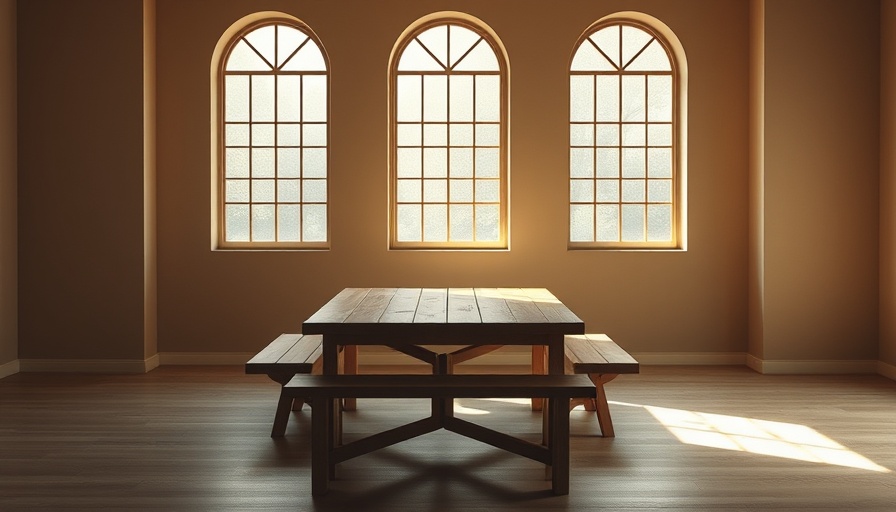
How Modern Materials Are Transforming Workspaces
In recent years, the landscape of furniture materials has shifted dramatically, reflecting a growing emphasis on ergonomics and sustainability. Bruce Hannah, a renowned furniture designer, argues that these advancements are not just superficial changes but vital improvements that directly enhance user comfort and productivity. As digital nomads increasingly seek to create efficient home offices, understanding these emerging trends is essential.
Why Ergonomics Matter More Than Ever
As remote work becomes the norm, the importance of an ergonomic workspace is undeniable. Studies show that an ergonomic setup can lead to significant productivity boosts, which is critical for professionals often juggling multiple responsibilities. Features like adjustable desks and supportive chairs make a tangible difference, reducing strain and helping maintain focus. In this context, Hannah's insights into modern furniture underline a broader shift towards workplaces that prioritize the user's well-being.
Exploring Sustainable Design Choices
Another key aspect of the beverage furniture evolution is the focus on sustainability. Materials traditionally used in furniture construction are being replaced by more Earth-friendly options, such as recycled plastics and sustainably-sourced woods. This not only appeals to environmentally-conscious consumers but also supports global efforts to reduce waste. For digital nomads who value both aesthetics and ethics, choosing furniture made from sustainable materials could enhance their workspace while aligning with personal values.
Adapting Furniture to Fit Remote Workstyles
Creating a comfortable and efficient workspace involves much more than simply choosing a chair and a desk. Adapting furniture to fit one's personal work style is essential. For instance, many digital nomads prefer flexible setups that allow for both sitting and standing throughout the day. Features such as height-adjustable desks empower users to change their position as needed, promoting better circulation and reducing the risk of fatigue. This adaptability aligns perfectly with the diverse working habits of a remote workforce.
Common Misconceptions About Modern Furniture
Despite the advancements in furniture design, several misconceptions persist. For example, some may believe that ergonomic furniture is excessively expensive or ugly. In truth, a variety of stylish yet affordable options exist that cater to different budgets and aesthetics. As highlighted by Hannah, the evolution toward better furniture isn’t solely a pursuit of high design; it also encompasses accessibility for all users.
Examples of Innovative Design in Action
Leading brands are embracing this change by introducing a range of innovative products. For example, the introduction of mesh chairs has revolutionized seating solutions, providing breathability while maintaining support. Additionally, companies are designing modular furniture that can easily adapt to different spaces, meeting the needs of digital nomads who may frequently relocate. These innovations are not only practical but also aesthetically pleasing, allowing for the creation of personalized work environments that can inspire creativity and efficiency.
As you consider how to enhance your workspace, remember that the evolving nature of furniture design emphasizes both functionality and personal comfort. By embracing these new materials and designs, you can cultivate an environment that promotes productivity and well-being. Invest time in exploring your options—your workspace is a reflection of your personal work style.
As digital nomads, the way we perceive our workspace can impact our overall productivity and health. Don't underestimate the role of quality furniture in shaping your remote experience. Explore modern ergonomic solutions that inspire comfort and efficiency; your body will thank you!
 Add Row
Add Row  Add
Add 




Write A Comment